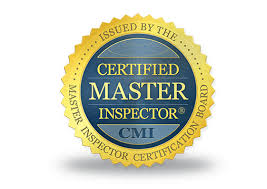Wood Energy Technology Transfer Inc. (WETT Inc.) is a non-profit training and education association managed by a volunteer Board of Directors elected by holders of valid WETT certificates. Through its administrative designate, WETT Inc. functions as the national registrar of the WETT program. Through professional training and public education, WETT Inc. promotes the safe and effective use of wood burning systems in Canada.
A certificate holder will not knowingly contravene any federal, provincial or municipal law, regulation or by-law relating to the sale, installation, inspection or maintenance of woodburning systems. Tests of individual advanced technology stoves show that they produce between 60 and 90 per cent less smoke than the old ‘airtights’. Most advanced stoves average between two and five grams of smoke per hour of use, whereas the old stoves emit as much as 40 grams per hour. In Libby, Montana, where 1130 old wood stoves were replaced by EPA certified models between 2005 and 2007, the average outdoor air pollution (from all sources) was reduced by 30 per cent and indoor air pollution by 70 per cent compared to previous years. All cities and towns with concerns about winter air pollution can achieve big improvements by promoting the use of only advanced technology wood heaters.
Like any other human endeavor, wood heating can be done badly or well. Firewood can be harvested poorly, burned dirty and its heat wasted. The harmful behavior of those who burn wood badly has led to continual attacks in the media on the whole idea of residential wood heating. The increasing public backlash and government response to wood smoke, particularly in urban areas, is of such concern to us here at woodheat.org that we created a new site called The Woodpile to serve as a place to discuss the future of wood heating. Please visit The Woodpile and give your views on the state of wood heating today.
 Energy is actively debated on several fronts these days. The Gulf of Mexico oil spill, drilling in the arctic, and the Alberta tar sands spark debate about the environmental wisdom of continued oil exploitation. Climate change is caused mainly by the combustion of fossil fuels, something that goes on at a spectacular rate around the world. Peak oil – meaning the maximum possible global production rate of conventional oil – has entered the mainstream discussion after a decade of lurking in the shadows. But judged by policy discussions about our energy future, wood heating is virtually nonexistent.
Energy is actively debated on several fronts these days. The Gulf of Mexico oil spill, drilling in the arctic, and the Alberta tar sands spark debate about the environmental wisdom of continued oil exploitation. Climate change is caused mainly by the combustion of fossil fuels, something that goes on at a spectacular rate around the world. Peak oil – meaning the maximum possible global production rate of conventional oil – has entered the mainstream discussion after a decade of lurking in the shadows. But judged by policy discussions about our energy future, wood heating is virtually nonexistent.
In April 2004, the CANMET combustion labs of Natural Resources Canada published results of its own research into dioxin emissions from wood stoves. Here is how the report authors described the results and presented them in a graph:
“When the total emission factors for each stove type are averaged, the certified stove produced 363 pg TEQ/kg dry fuel and the conventional stove produced 847 pg TEQ/kg dry fuel.
The certified woodstove produced lower PCDD [dioxin] and PCDF [furan] emissions than the conventional stove. This result is the opposite to the findings of the Environment Canada study. The effect of burn rate is dependent on the type of stove. For the conventional stove, a high burn rate produced more PCDD and PCDF emissions than a low burn rate. The opposite was observed for the certified stove, a low burn rate produced a more PCDD and PCDF emissions than a high burn rate.” Now we have the two most carefully instrumented investigations into dioxin emissions from wood stoves ever conducted producing opposite results. And the EPA certified stove is shown in the second study to produce less than half dioxin emissions of the conventional stove, on average.
All wood, regardless of species, has about the same energy content per pound. The different species vary mainly in density. Traditionally, the favored trees in central North America were oak and maple because they are very dense and produce long-lasting coals. But these are valuable trees and in many areas are not plentiful enough to burn. No problem, just use softer woods like birch or poplar (aspen) or any other tree that is readily available. By far the most important characteristic of any firewood is its moisture content. Keep in mind that people living in the coldest areas of North America have no hardwoods to burn and they get along just fine – their main firewood species are spruce and aspen. Ultimately, it is more important to have wood that is cut and split to the right size and properly dried than it is to get the hardest wood available.
The Barrie Home Inpector is a Certified WETT Inspector and provides services in Barrie, Alliston, Orillia, Midland, Penetang, Bradford, Newmarket, Innisfil, Tiny Beaches, Oro-Medonte, Springwater, Stayner, Wasaga Beach, Alcona Beach, Lagoon City, Brechin, Angus, New Lowell and many other communities in Simcoe County.
